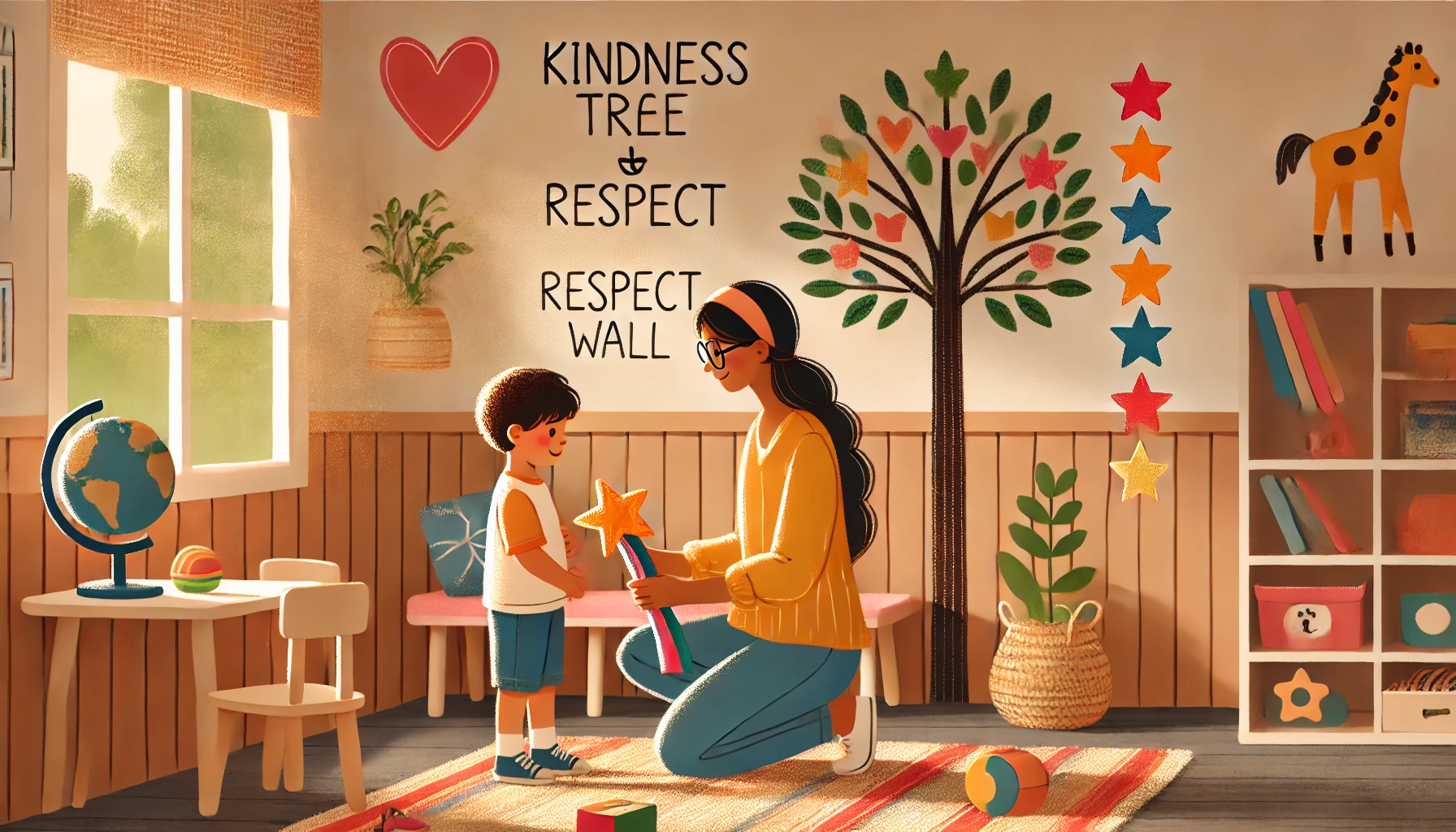Respect and kindness are essential values that help children form strong, positive relationships and contribute to a caring community. These values are not just about saying “please” and “thank you”—they’re about treating others with empathy, patience, and consideration. Teaching children to be kind and respectful early on gives them the foundation for lifelong emotional intelligence.
Why Teaching Respect and Kindness Matters
- Fosters empathy and emotional awareness
- Promotes healthy friendships and cooperation
- Reduces conflict and aggression
- Supports inclusion and diversity
- Encourages accountability and positive social behavior
1. Define Respect and Kindness in Simple, Clear Language
Use relatable examples to help kids understand.
Activity Idea:
- Say: “Kindness means being gentle, helpful, and caring. Respect means treating people the way you want to be treated.”
- Give real-life examples: “We’re being kind when we share our toys” or “We show respect when we listen quietly while someone talks.”
- Ask: “How do you feel when someone is kind to you?”
What Kids Learn:
- That their behavior affects others.
- How to recognize respectful and disrespectful actions.
- The emotional impact of their choices.
2. Use Books and Stories to Model Kindness
Stories make values real and understandable.
Activity Idea:
- Read books like Have You Filled a Bucket Today? by Carol McCloud or Be Kind by Pat Zietlow Miller.
- Discuss characters’ actions: “What did they do that was kind?”
- Ask your child to draw a picture of something kind they’ve done or want to do.
What Kids Learn:
- How kindness is shown in everyday actions.
- That everyone has the power to help others.
- How empathy is expressed through story.
3. Praise Acts of Kindness and Respect
Reinforcement builds repetition.
Activity Idea:
- Say: “That was so thoughtful when you gave your friend a turn.”
- Create a “Kindness Tree” or “Respect Wall” where your child adds a leaf or star when they act with kindness.
- Celebrate with small rituals, like a special high-five or hug.
What Kids Learn:
- That their kindness is seen and appreciated.
- Motivation to act kindly again.
- That helping others feels good.
4. Role-Play Respectful and Disrespectful Behaviors
Give kids a chance to practice and reflect.
Activity Idea:
- Act out scenarios like: “What do we do when someone is sad?” or “How do we speak when someone is angry?”
- Let your child pretend to comfort a toy or politely disagree with a puppet.
- Reflect together: “How did that make the other person feel?”
What Kids Learn:
- Social problem-solving skills.
- How to navigate different emotions and situations.
- That kindness takes action, not just words.
5. Teach Polite Language and Listening
Simple manners are part of everyday respect.
Activity Idea:
- Practice phrases: “Please,” “Thank you,” “Excuse me,” and “I’m sorry.”
- Play listening games like “Simon Says” or “Follow the Sound.”
- Encourage eye contact and waiting their turn to speak.
What Kids Learn:
- Basic social expectations.
- Patience and respect for conversations.
- The importance of words and tone.
6. Model Respect and Kindness in Your Own Behavior
Children learn most by watching.
Activity Idea:
- Narrate your respectful actions: “I’m holding the door because I want to be kind.”
- Speak kindly to your child, even when correcting behavior.
- Show respect to others, including waiters, teachers, and neighbors.
What Kids Learn:
- How to treat others in all situations.
- That kindness is a family value.
- That respect is part of every interaction.
7. Encourage Inclusion and Appreciation of Differences
Respect includes how we treat those who are different from us.
Activity Idea:
- Read books about diversity, abilities, and cultures.
- Say: “Everyone is special in their own way.”
- Invite your child to play or talk with someone new at the park or school.
What Kids Learn:
- That kindness crosses all boundaries.
- How to see value in everyone.
- A sense of global empathy.
8. Reflect Daily on Kindness Moments
Reflection builds habits and awareness.
Activity Idea:
- At bedtime, ask: “What kind thing did you do today?” or “Was anyone kind to you today?”
- Use a kindness journal with stickers or drawings.
- Set a “kindness goal” for the next day.
What Kids Learn:
- That kindness is part of daily life.
- How to notice and appreciate gentle moments.
- How small actions make a big difference.
Final Thoughts
Teaching respect and kindness to young children helps them build lasting relationships, navigate challenges with empathy, and contribute positively to their communities. With gentle guidance, thoughtful modeling, and consistent encouragement, we can raise children who are not only smart—but also kind-hearted and respectful.
